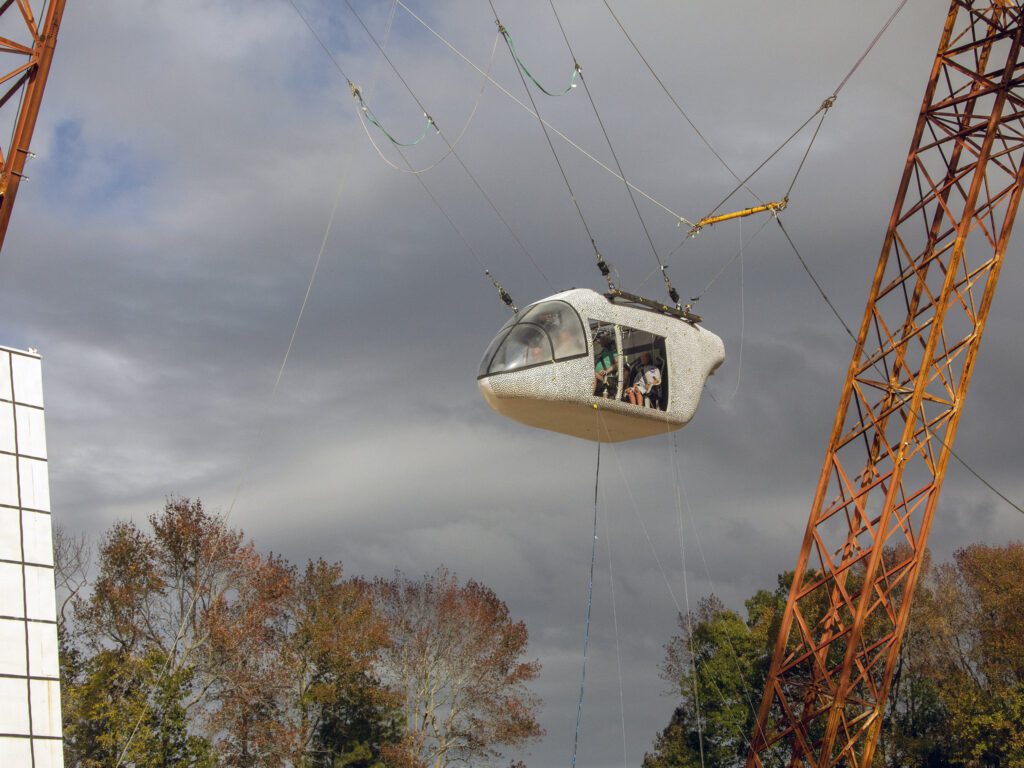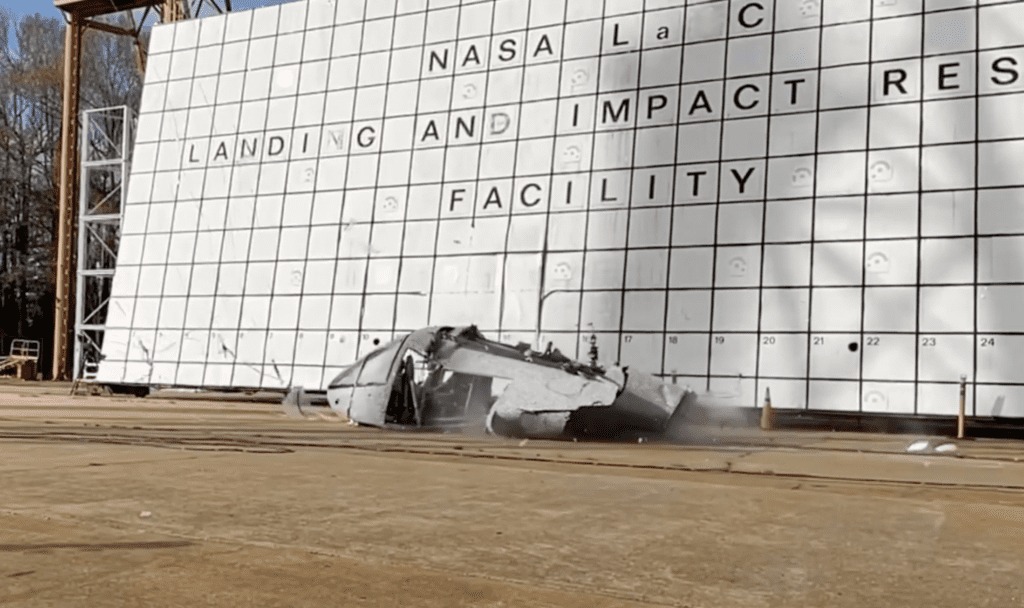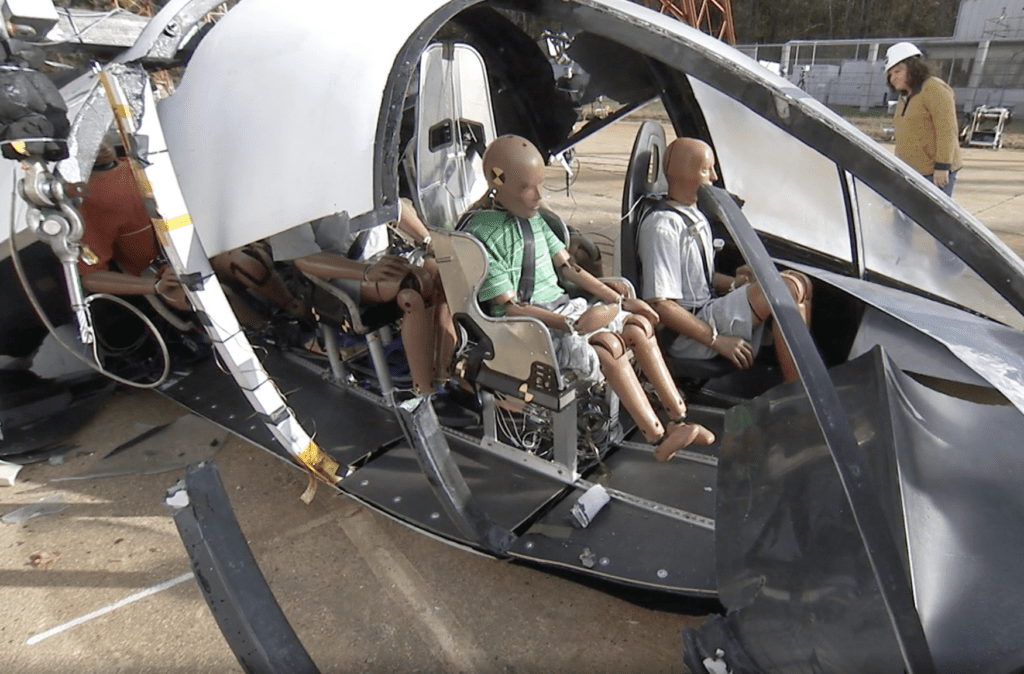NASA Conducts eVTOL Crash Test


NASA researchers conducted a crash test of an electric vertical take-off and landing (eVTOL) aircraft at the Langley Research Center in Virginia. (Photo: NASA)
Just before the holidays, NASA researchers conducted a crash test of an electric vertical take-off and landing (eVTOL) aircraft. More than 200 channels of data gathered will aid researchers in understanding how the structure of an eVTOL reacts to a crash landing. The data collected will be used to make more accurate predictions for future simulations and testing. It will also inform the potential conditions for a second drop test that is planned to take place in late 2023.

“We successfully tested the eVTOL vehicle concept representing a six-passenger, high wing, overhead mass, multiple rotor vehicle, obtaining more than 200 channels of data, and collecting over 20 onboard and off-board camera views.” – Justin Littell, NASA research assistant (Photo: screenshot from video footage provided by NASA / Credits: Gary Banziger)
The eVTOL concept vehicle, developed by NASA’s Revolutionary Vertical Lift Technology (RVLT) project, featured a “Lift + Cruise” configuration. The aircraft was designed to represent a six-passenger vehicle with multiple rotors. Along with the crash test, NASA’s team conducted a variety of experiments such as a range of sizes of crash test dummies and a variety of seat configurations. NASA also tested a modular energy-absorbing composite subfloor on the aircraft.
According to NASA’s announcement, “The subfloor and energy absorbing seats functioned as intended and limited the effect of the impact on the crash test dummies.” It was also noted that “the vehicle was destroyed beyond expectations which gives researchers valuable data when planning to make AAM vehicles safe for public use.”

“Crash test dummies can be seen seated in the vehicle after suffering a severe crash. The vehicle was destroyed beyond expectations which gives researchers valuable data when planning to make AAM vehicles safe for public use.” (Photo: screenshot from video footage provided by NASA / Credits: Gary Banziger)
The researchers are still determining the effect of the collapse of the overhead structure on the crash test dummies that occurred during the test.
The crash test took place at the Landing and Impact Research facility at NASA’s Langley Research Center in Hampton, Virginia. Justin Littell, research assistant for Langley’s Structural Dynamics Branch, commented on the experiment, saying, “Our computational pretest models did a good job predicting the composite deformation until overhead structural failure. However, the computational models did not predict the overall collapse as seen in the test.”
Footage of the crash test can be viewed here.
The post NASA Conducts eVTOL Crash Test appeared first on Avionics International.
—————
Boost Internet Speed–
Free Business Hosting–
Free Email Account–
Dropcatch–
Free Secure Email–
Secure Email–
Cheap VOIP Calls–
Free Hosting–
Boost Inflight Wifi–
Premium Domains–
Free Domains





